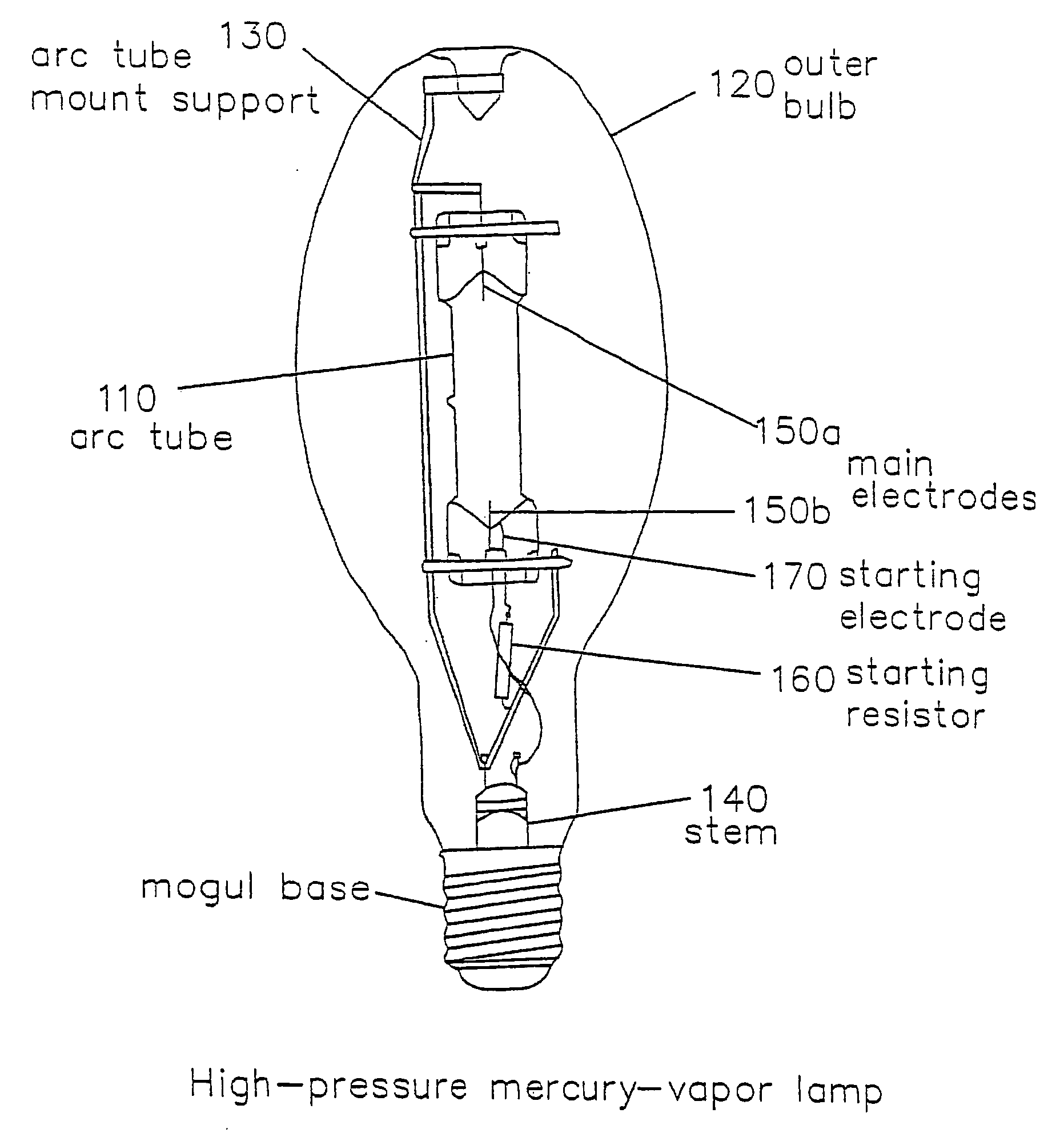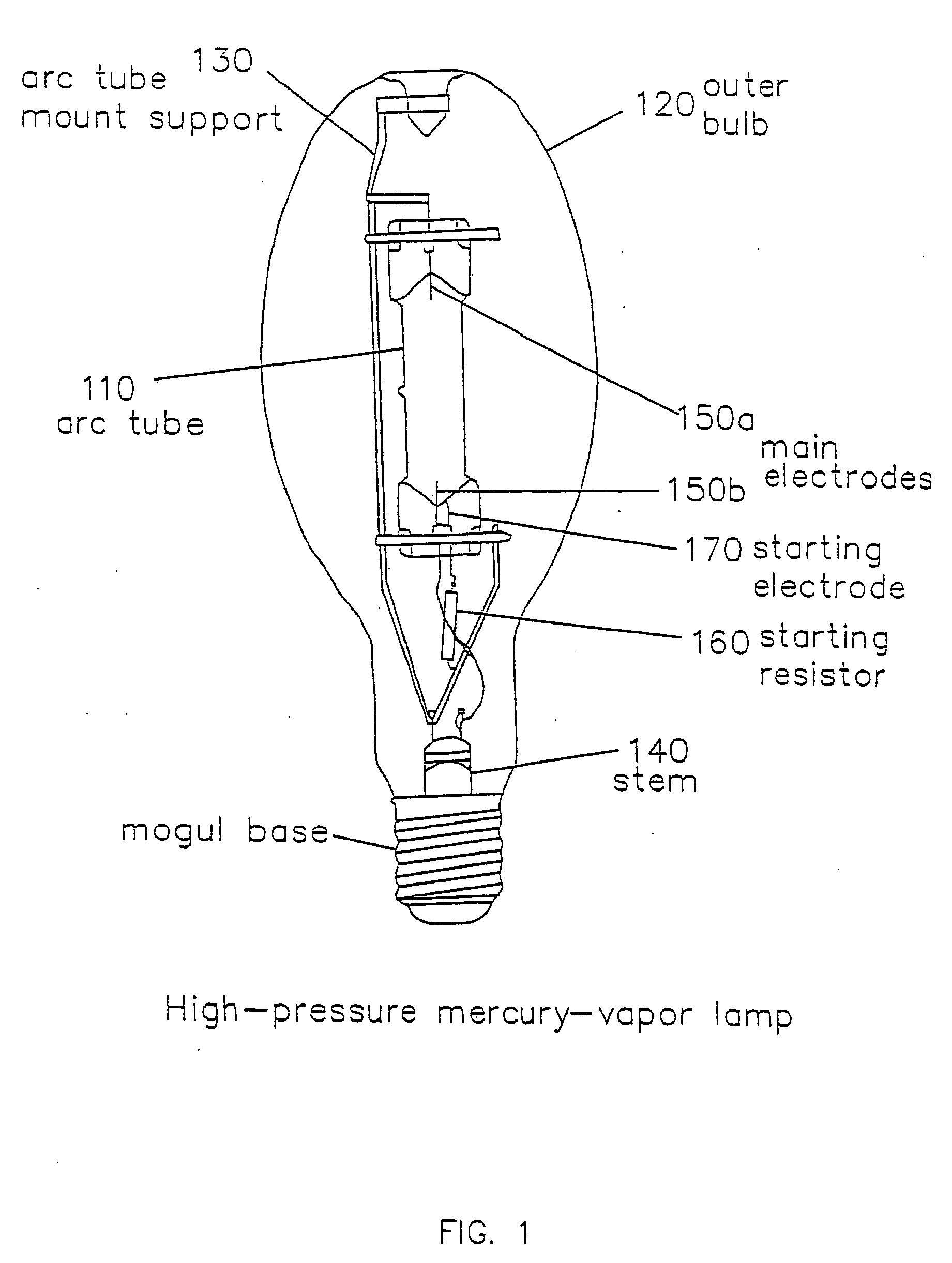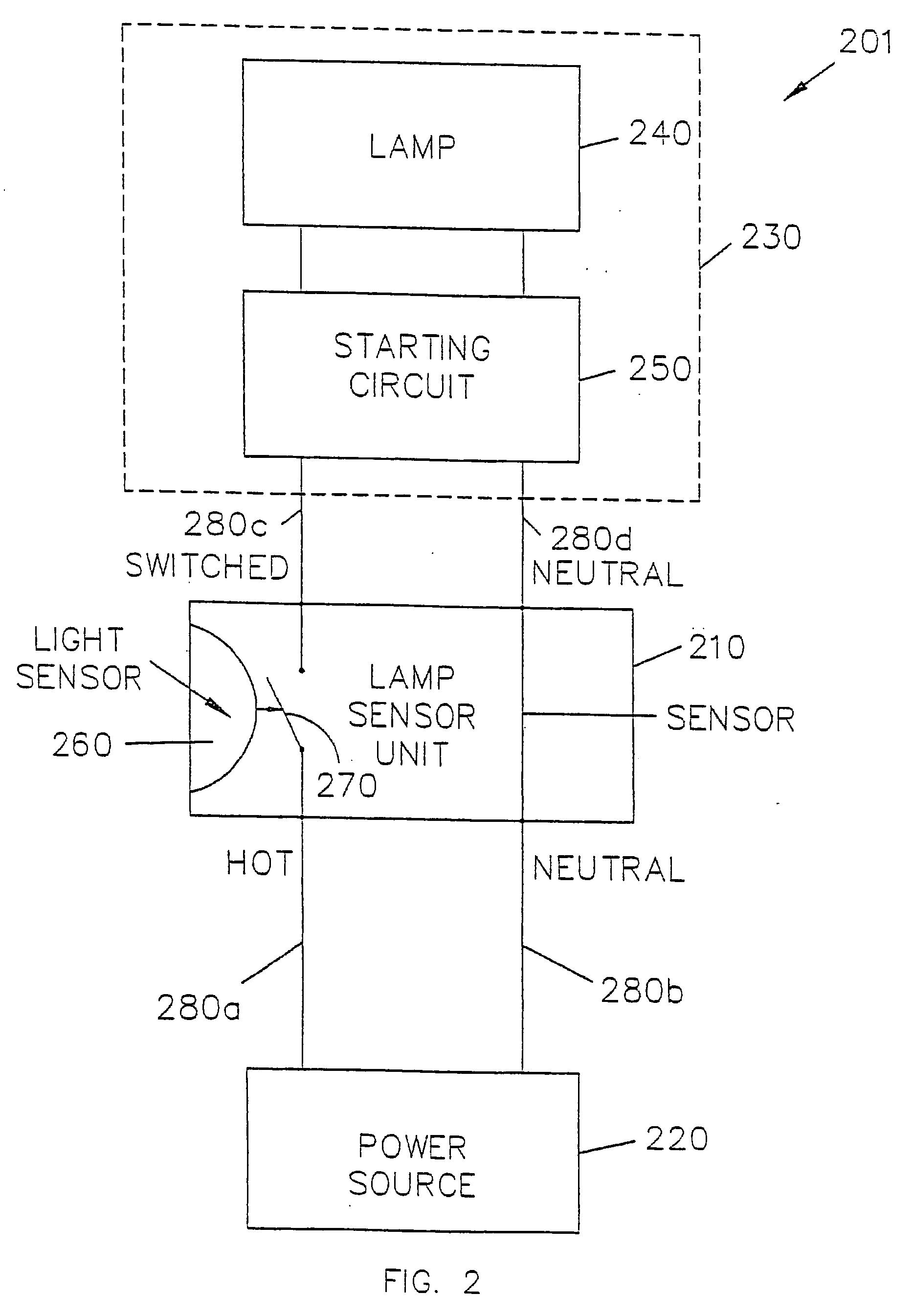Lamp monitoring and control system and method
a technology of monitoring and control system and control system, which is applied in the direction of electric controller, ignition automatic control, instruments, etc., can solve the problems of no centralized monitor and control mechanism, no standard starting circuit for mercury-vapor lamps, and labor-intensive monitoring and control function of early street lamps, so as to reduce the probability of collision, improve the probability of packet reception, and provide centralized monitoring and/or control
- Summary
- Abstract
- Description
- Claims
- Application Information
AI Technical Summary
Benefits of technology
Problems solved by technology
Method used
Image
Examples
Embodiment Construction
[0068] The preferred embodiments of a lamp monitoring and control system (LMCS) and method, which allows centralized monitoring and / or control of street lamps, will now be described with reference to the accompanying figures. While the invention is described with reference to an LMCS, the invention is not limited to this application and can be used in any application which requires a monitoring and control system for centralized monitoring and / or control of devices distributed over a large geographical area. Additionally, the term street lamp in this disclosure is used in a general sense to describe any type of street lamp, area lamp, or outdoor lamp.
[0069]FIG. 3 shows a lamp arrangement 301 which includes lamp monitoring and control unit 310, according to one embodiment of the invention. Lamp monitoring and control unit 310 is situated between a power source 220 and a lamp assembly 230. Lamp assembly 230 includes a lamp 240 and a starting circuit 250.
[0070] Power source 220 may b...
PUM
 Login to View More
Login to View More Abstract
Description
Claims
Application Information
 Login to View More
Login to View More - R&D
- Intellectual Property
- Life Sciences
- Materials
- Tech Scout
- Unparalleled Data Quality
- Higher Quality Content
- 60% Fewer Hallucinations
Browse by: Latest US Patents, China's latest patents, Technical Efficacy Thesaurus, Application Domain, Technology Topic, Popular Technical Reports.
© 2025 PatSnap. All rights reserved.Legal|Privacy policy|Modern Slavery Act Transparency Statement|Sitemap|About US| Contact US: help@patsnap.com



